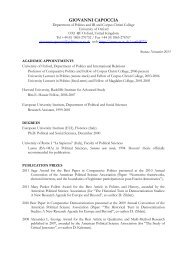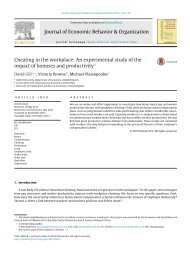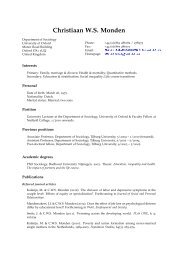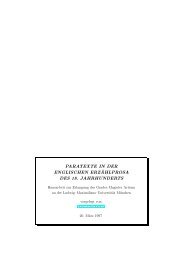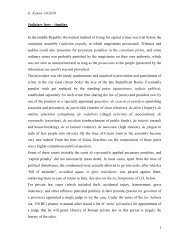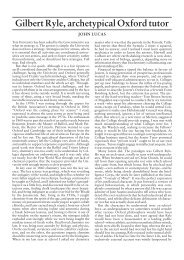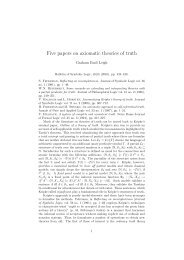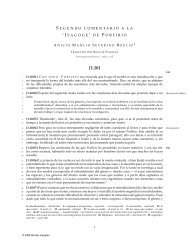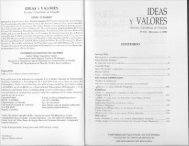Lexical Functional Grammar - Personal Pages Index
Lexical Functional Grammar - Personal Pages Index
Lexical Functional Grammar - Personal Pages Index
You also want an ePaper? Increase the reach of your titles
YUMPU automatically turns print PDFs into web optimized ePapers that Google loves.
(26) a. (f PRED) = ‘SNEEZE〈SUBJ〉’<br />
(f TENSE) = PRES<br />
(f SUBJ) = g<br />
(g PRED) = ‘DAVID’<br />
(g NUM) = SG<br />
(f SUBJ NUM) = c SG<br />
b.<br />
⎡<br />
⎤<br />
PRED ‘SNEEZE〈SUBJ〉’<br />
TENSE PRES<br />
f:<br />
⎢ [ ]<br />
⎣ PRED ‘DAVID’ ⎥<br />
SUBJ g: ⎦<br />
NUM SG<br />
Here, the value SG for the NUM feature for g is specified in the second-to-last<br />
line of the functional description. Thus, the f-structure in (26b) satisfies the<br />
defining constraints given in the first five lines of (26a). Moreover, it satisfies<br />
the constraining equation given in the last line of (26a).<br />
Wecan alsoplaceotherrequirementsontheminimalsolution tothedefining<br />
equations in some f-description. The expression in (27a) requires f not to<br />
have the value PRESENT for the feature TENSE, which can happen if f has<br />
no TENSE feature, or if f has a TENSE feature with some value other than<br />
PRESENT. When it appears in a functional description, the expression in (27b)<br />
is an existential constraint, requiring f to contain the feature TENSE, but<br />
not requiring any particular value for this feature. We can also use a negative<br />
existential constraint to require an f-structure not to contain a feature, as<br />
in (27c), which requires f not to contain the feature TENSE with any value<br />
whatsoever.<br />
(27) a. Negative equation: (f TENSE) ≠ PRESENT<br />
b. Existential constraint: (f TENSE)<br />
c. Negative existential constraint: ¬(f TENSE)<br />
<strong>Functional</strong> descriptionscanalsobestatedintermsoftheBoolean operations<br />
of conjunction, disjunction, and negation. In the f-descriptions given above,<br />
we implicitly assumed that the constraints in the f-description are interpreted<br />
conjunctively: if an f-description contains more than one requirement, each<br />
requirement must hold. LFG also allows disjunctions and negations of sets<br />
of requirements. For example, a verb like sneeze contributes the following f-<br />
description:<br />
(28) sneeze (f PRED) = ‘SNEEZE〈SUBJ〉’<br />
{(f VFORM) = BASE |<br />
(f TENSE) = PRES<br />
¬{(f SUBJ PERS) = 3<br />
(f SUBJ NUM) = SG} }<br />
Disjunction is indicated by curly brackets, with the alternatives separated by<br />
a vertical bar |. Negation for a set of requirements is represented by prefixing<br />
12



